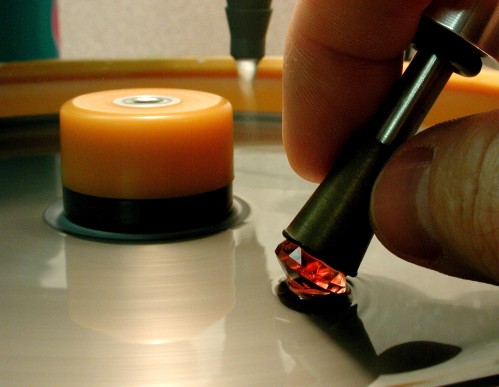It can often be intimidating when entering a jewelry store. There’s a common language you need to understand to make the most of your purchase. Here at Joseph Schubach Jewelers, we’re able to personally advise you if you visit our showroom in Scottsdale, Arizona or give you advice on the phone or via email.
Here’s a few definitions you might want to familiarize yourself with:
Cut
This refers to the actual cut of a gemstone, which includes both its basic shape (teardrop, pear, etc.) and the actual style and quality of the work itself. Because cut can have such a dramatic effect on a stone’s clarity and color exhibition, it can also affect its price.
The most common cutting techniques are tumbling, drilling, lapping, grinding, sawing, sanding and polishing.
Tumbling
By placing a gemstone in a rotating tumbler filled with water and chemical or natural stone abrasives, this technique polishes the stone to define its shape. Modern techniques also include contemporary vibrating machines.
Drilling
Drilling allows the cutter to drill a hole through or into a stone, and the tools are either actual rotating drills or high-tech ultrasonic.
Lapping
The lap is a lapidary’s, or stone cutter’s, most essential tool. The lap is a flat disk that creates flat surfaces on a stone by either vibrating or rotating very quickly.
Grinding
Using diamond and silicon carbide grinding wheels, gemstones are ground into a form and particular shape.
Sawing
Using a steel or copper blade enhanced with a diamond grit edge, sawing allows the cutter to make hard cuts. Oil or water is used in this technique to prevent the stone and the blade from overheating.
Sanding
Like grinding, but with finer abrasive substances, sanding is often a finer follow-up that allows the gem worker to remove cosmetic scratches and polish the stone’s surface.
Clarity
The clarity of a stone refers to its translucency and subsequent absence of flaws. Flaws like blemishes, which appear on the surface, and inclusions, which are internal feathers or fissures, can affect the stone’s clarity and subsequently its value.
When a jeweler refers to a stone’s clarity, he or she is referring to the abundance or lack of flaws within the stone.
Carat
Carat is a term that simply refers to a stone’s weight. Except for pearls and corals, all gems are weighed in carats. It’s important to remember that carat is a measurement of weight and not size. A one-carat ruby is going to be differently sized than a one-carat diamond.
Source: JewelryFashionDesign.com

